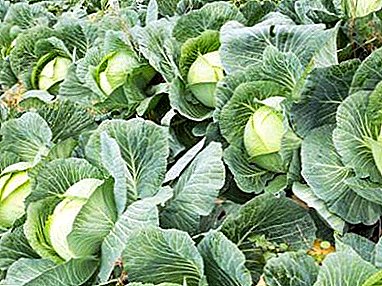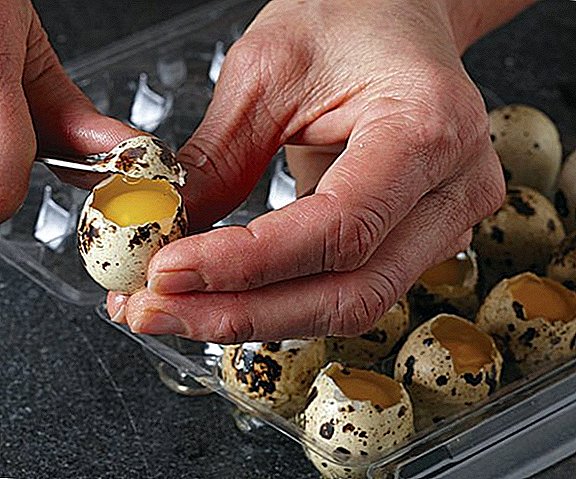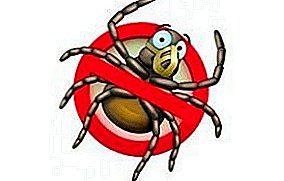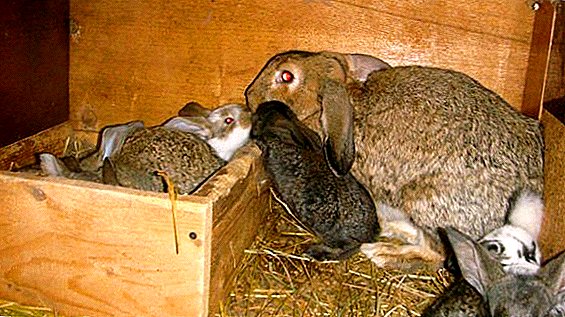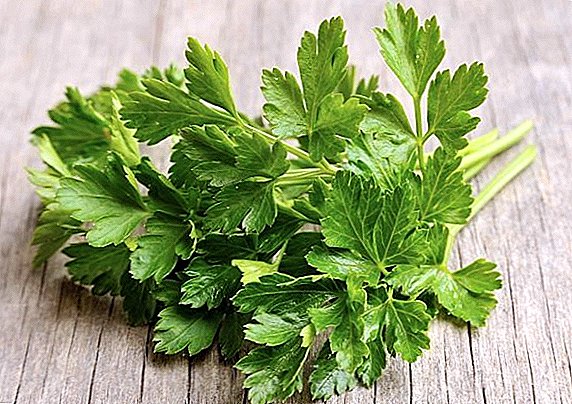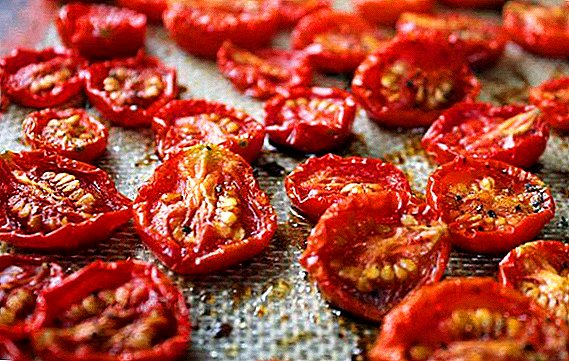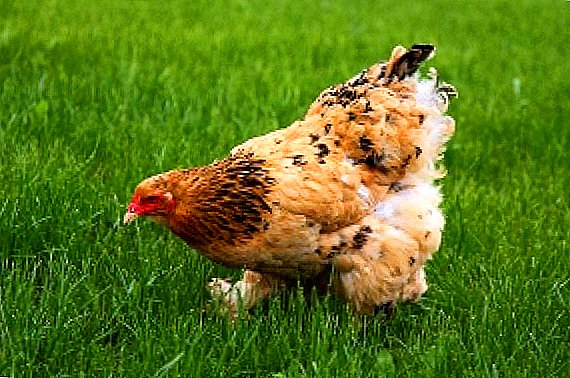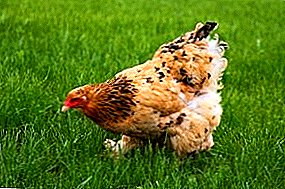
Nowadays, breeding poultry is quite a profitable business.
But, like all pets, chickens are also susceptible to various diseases.
The main and significant problem in the development of poultry farming is chicken diseases.
Sometimes it happens that there are very serious infectious diseases, due to which you have to cut out all the livestock.
Any farmer, even a beginner, should be aware of various diseases and how to treat them.
In this article you will learn a lot about diseases of chickens, about their symptoms, prevention of diseases and their treatment.
What diseases of birds exist?
Birds can be subject to various diseases. The main of them include: infectious, non-infectious, as well as chronic.
Birds can attack various parasites. Birds can be subject to burns, hypothermia, various inflammations or a lack of vitamins.
In order to prevent the disease of chickens, you need to observe and examine them.
Normal and healthy chickens lead a very active life, they have a good appetite. Feathers should be shiny and smooth. They also walk and stand steadily.
When inspecting the bird, attention should be paid to the following factors:
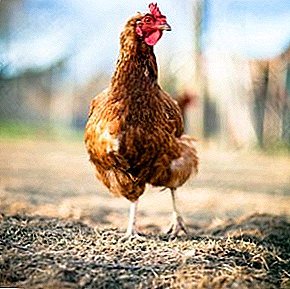
- On the skin of the bird.
- On the breath of a bird.
- On the movement of the legs, neck, wings.
- On the digestive organs.
- On the feet of the bird.
If it happened that you discovered a disease in any chicken, then you first need to wean it from the rest. This is done to avoid the disease of the entire population.
Then you need to make the correct diagnosis and its treatment. The best option would be take the bird to the doctor, but if there is no such possibility, then do everything yourself.
Diseases of birds can be both infectious and not. Contagious can lead to the death of the entire herd. And non-communicable diseases are not so dangerous, but they also need to be treated.
Infectious and non-communicable diseases are also divided into different categories, which we describe below.
What applies to infectious diseases?
Infectious diseases are the most dangerous. Due to the fact that they can destroy all your livestock.
There are several types of infectious diseases:
- Diseases with a predominance of infections.
- Fungal diseases.
- Helminthic diseases.
- And diseases that are caused by different insects.
We will talk about each of them below.
What diseases are infectious?
Pseudochuma or another name for its disease is Newcastle
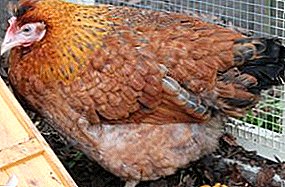
This disease is transmitted by airborne droplets.
The symptoms of the disease include: the lethargic condition of the bird, poor movement, heavy breathing, liquid droppings, the bird turns over on its belly.
How to treat a bird? With this disease, treatment is not possible and therefore it is not too late, you need to separate the bird from the entire herd and kill it.
For prophylactic purposes, cleanliness should be observed in the chicken coop room, good proven feed should be given, vaccinate birds.
Pulloz (Typhus)
In this case, the chickens suffer from the stomach. Also transmitted by airborne droplets. Mostly adult birds are affected.
The symptoms of the disease include: lethargic condition of the bird, poor movement, no appetite, breathing is very frequent. Chickens also drink a lot of water. They form a dangling belly and notice lethargy crest.
How to treat a disease? In this case, the disease is treated with special antibiotics. Antibiotics are administered with injections or poured into the throat.
For prevention, the following measures are taken: to do this, remove the bird from the herd, in the hen house to hold disinfectant measures.
Salmonellosis (Paratyphoid)

This disease is caused by harmful Salmonella bacteria. It refers to a very dangerous disease that damages all the internal organs of the bird.
Disease is transmitted by air. Eggs from sick chickens can not be eaten, as you can get yourself.
These harmful bacteria die only during heat treatment.
The symptoms of the disease include: there is a weakness in the bird, a breathing disorder, the bird constantly drinks water, watery eyes, no appetite.
How to treat the disease? For the treatment of used drugs such as furazolidol or streptomycin.
As a preventive measure, a sick bird is isolated. Monitor the hygiene of the house. It is necessary to give the birds water with potassium permanganate. Also need to be vaccinated.
Streptococcosis
This disease infects all internal organs of chickens.
Symptoms in this disease are as follows: rapid weight loss due to lack of appetite, weakness, body temperature rises, there are convulsions and joints become inflamed, and there is also poor bowel function.
Treatment for poultry consists of antibiotics.
To prevention include: isolation of sick poultry and sanitation measures.
Tuberculosis
Basically, only the lungs are affected, and sometimes all the internal organs. This disease appears due to poor hygiene content in the hen house. Transmission of the disease passes through the air.
The symptoms of the disease include: poor mobility and weight loss. Lack of eggs. The crest fades and the earrings shrink.
It is impossible to treat the disease, so the sick bird is killed.
For the prevention of the disease are cleaning the coop.
Smallpox (Diphtherit)
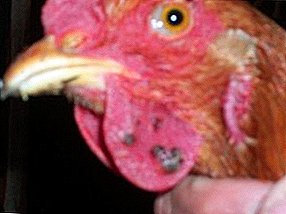
This is a very serious disease. But it can occur in a chronic form. Transmission is only at the contact of birds, or from small rodents.
Symptoms of the disease are as follows: weight loss and the appearance of weakness, it becomes difficult to swallow food, the appearance of reddish spots on the skin.
Treat, perhaps, only in the early stages of the manifestation of the disease. Spots must be lubricated with furatsilina solution and also treated with antibiotics.
As a preventive measure, hygiene measures in the hen house are suitable, as well as the inculcation of birds.
Ornithosis or parrot disease
The disease belongs to the most dangerous, affects the respiratory, digestive organs, as well as the nervous system of the bird.
Infection occurs through air or droppings.
The manifestation of the disease can be seen in the following symptoms: there is no appetite in the bird, and, consequently, loss in weight. Heavy breathing. Liquid droppings, nasal mucus.
Antibiotics and the addition of potassium permanganate to water are suitable for effective treatment. And in the feed you need to add more vitamins.
As a preventive measure, hygiene measures are suitable. If sick birds come in contact with healthy ones, then healthy ones also need antibiotics for two days. It is necessary to process all working inventory.
Omphalite
The disease is characterized by inflammation in the navel. That's because the reason is poor bird content.
Symptoms include: the appearance of weakness, any education near the navel. Birds affected by the disease, keep in piles.
Antibiotics are used for treatment, and the affected navel is treated with a special solution.
For prevention you need to keep the house clean and tidy.
Neurolymphomatosis
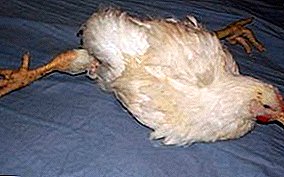
The disease is characterized by damage to the nervous system of the bird, and sometimes damage to other organs.
Symptoms include loss of appetite and weight, blindness. Paralysis.
Treatment for this disease is not possible.
As a preventive measure, poultry vaccination should be performed. And with the disease you need to remove the sick bird from everyone.
.
Colisepticemia or Coliinfection
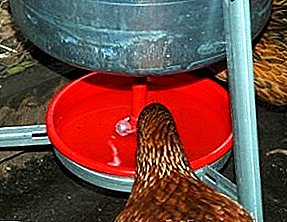
The disease manifests itself through the formation of Escherichia coli. It affects almost all the internal organs of the bird.
The disease is very dangerous. The reason for the appearance due to poor feed and poor bird content.
Symptoms include: loss of appetite, lethargy, high body temperature, poor breathing is possible even with wheezing, and the appearance of great thirst.
To save the bird from death can only use antibiotics.
As preventive measures apply a normal diet for poultry, as well as adhering to the rules of cleanliness and maintenance of poultry.
Coccidiosis
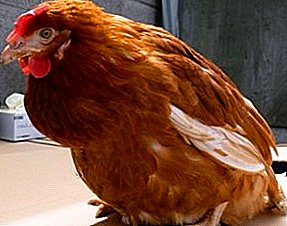
This disease affects the kidneys of the bird. Infection occurs only through feed.
Symptoms include the following factors: lack of appetite and weight loss, bloody stool, stiffness, comb and earrings whiten and grow dumb, wing omission.
It is necessary to treat a sick bird with antibiotics, and add fish oil to the feed.
As a preventive measure, it is necessary to clean the house, feed it with fresh food, and also so that there is no dampness in the hen house.
It is also interesting to read about potato cultivation using Dutch technology.
Encephalomyelitis
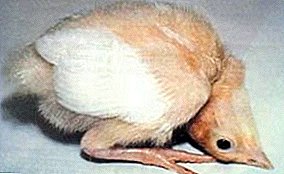
This infectious disease is bad for the nervous system.
It is very dangerous and leads to the death of the bird. Transmission occurs through the air, through feed, as well as through litter.
Symptoms of the disease are: inactivity and the development of paralysis, muscle tremor and loose stools.
Unfortunately, it is impossible to cure the disease.
For the prevention of the disease you need to monitor hygiene, nutrition and poultry.
Sinusitis
In this disease, the airways suffer, the disease is transmitted through the air.
Symptoms include bad breathing with wheezing, mucus secreted from the nose, sometimes there can be convulsions.
In treating the disease, terramycin is used. But do not give up antibiotics.
As a preventive measure, green fodder with the addition of vitamins is used.
Laryngotracheitis
The disease is manifested by lesions of the upper respiratory tract in birds. It is transmitted through the air.
The symptoms are as follows: bad breath with wheezing, blood cough, all the time open beak, sometimes manifestation of convulsions and fear of light.
As a treatment, aerosol antibiotics are suitable, as well as a solution of potassium permanganate.
As a preventive measure, it is necessary to vaccinate birds.
Hemophilia or runny nose in a bird
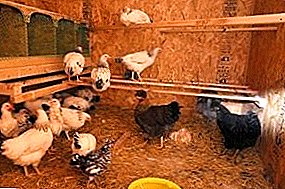
The disease is characterized by lesions of the upper respiratory tract, the formation of the so-called rhinitis.
The causes of this lack of vitamins in the diet.
Symptoms include weight loss, nasal mucus, and shortness of breath.
To treat a disease, a disinfectant solution is added to the water.
For prevention, you need to warm the chicken coop, keep it clean and properly feed the bird.
Chicken flu
This disease affects the respiratory organs as well as the intestines.
The disease is very dangerous and leads to death. The disease is transmitted by air.
Symptoms include: poultry weakness and lethargy, diarrhea, high fever, wheezing with breathing, no egg production, a comb and earrings turning blue.
Treatment of this disease is impossible.
In preventive measures, cleanliness and order in the hen house should be maintained. Properly feed the bird. Sick bird isolate from others.
Anaerobic diarrhea
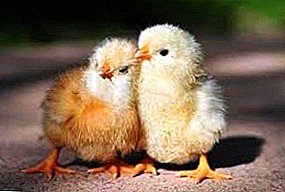
Chickens are susceptible to this disease.
Symptoms of the disease are: diarrhea for a very long period of time. The appearance of seizures. Sick chicks are cold.
Unfortunately, there is no treatment for this disease.
In the prevention of the disease, poultry house disinfection is used. And the chickens are watered with a weak solution of potassium permanganate.
Trichomoniasis
The disease is very dangerous. Infection of birds occurs through food and water.
Symptoms include the following signs: inactivity and depression of the bird, the beak is open all the time, wings fall, feathers stick together.
For the treatment of applied solution of tricholop. Birds need to feed them.
For prevention you need to properly keep the bird. And also buy good proven feed.
What diseases are fungal diseases?
Fungal diseases are not as terrible as infectious, but they must also be dealt with.
They are contagious and transmission occurs through bird contact. The most dangerous of fungal diseases can lead to death.
Most fungal diseases are due to dirty rooms. Fungi spread very quickly. Below we give a small list of such diseases.
Deprive the ringworm
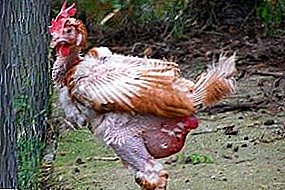
It is one of the most dangerous fungal diseases, which is fatal. Mainly adult chickens are ill.
Skin, feathers and internal organs are affected.
Symptoms of the disease are: yellow formations appear on the ridge and earrings.
Birds breathe heavily. Feathers fall out. Weight loss and loose stools.
To cure a bird is not possible.
Prevention consists of good nutrition and clean content.
Aspergillosis
This disease affects the respiratory tract.
The symptoms of the disease include: lethargy and weakness of the bird. Beak and nails turn blue. Feathers fall out.
The bird sneezes, wheezing when breathing. Liquid droppings with blood. The appearance of mucus from the nose.
As treatment, a solution of blue vitriol is used for two days.
As a preventive measure, you need to clean the room and add vitamins to food.
What concerns helminthic diseases of birds?
These diseases are caused by parasites. They are contagious. We will tell about some of them.
Amidostomosis. The disease manifests itself in the defeat of the stomach. It is not very dangerous if you start treatment at the time.
Symptoms include: a lethargic condition of the bird, no weight gain, no appetite.
For treatment, you can use the use of carbon tetrachloride or piperazine.
As a prevention, you need to clean up the chicken coop, as well as follow the diet.
Capillariasis
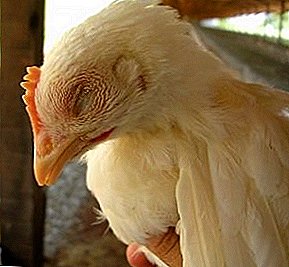
In this disease, the intestines are affected and this is due to poor feed.
Symptoms include: drowsiness and apathy, loss of appetite, heavy drinking, exhaustion.
Treatment should be carried out at an early stage, or later it will be too late. For treatment use the drug phenothiazine, as well as proper nutrition.
As a prophylaxis, removal from the flock of affected birds is carried out. Disinfection in the hen house. And also to prevent the occurrence of the disease you need to eat the birds properly and monitor the cleanliness of the room.
Syngamosis
The manifestation of this disease affects the respiratory tract, lungs and trachea.
The disease has the following symptoms: due to poor appetite, weight loss occurs, and sometimes wheezing during breathing.
The use of iodine is suitable as a treatment.
For prevention, you must comply with all standards of poultry. Cleaning the house.
Ascariasis
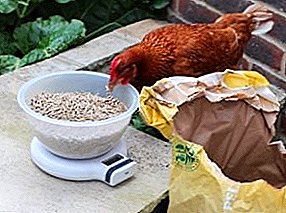
When this disease occurs, worms appear in the intestines of the bird. But it is easily treated.
Symptoms include: poor appetite, weight loss, low bird mobility. The laying of eggs stops. Intestinal blockage. And sometimes the manifestation of seizures.
During treatment, it is necessary to use hygromycin B, carbon tetrachloride and finothiazine.
As a preventive measure, it is necessary to clean the room, observe the norms of nutrition and poultry.
Cestadose
Characterized by the appearance of tapeworms.
Symptoms of the disease are: poor appetite, weight loss, cramps.
As a treatment using the drug felixan.
And for the prevention of the disease you need to comply with proper nutrition.
Drepanidoteniasis
This disease is manifested in the appearance of tapeworms in birds.
Symptoms include: indigestion, diarrhea. Squatting the bird on the tail. Sometimes paralysis occurs.
For the treatment of the disease, the following drugs are used as finsal, microsal. Garlic is very effective, you can also feed the pumpkin seeds to the bird.
For prevention, you need to comply with proper nutrition of the bird. If it dies, the body must be burned.
Histomoniasis
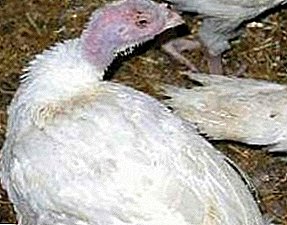
The liver organ and cecum are affected.
Symptoms include poor condition of the bird, no appetite, blue head and ruffled feathers.
Treatment should be carried out with furazolidone. And also add vitamins to food.
As a prevention, you need to add vitamin A.
Hymenolepiasis
This disease covers the intestines.
Symptoms include the following: the appearance of liquid stool, indigestion. Sometimes there are cramps.
The treatment is carried out with such drugs as kamala, frilixan or arecoline.
For preventive purposes, it is necessary to eat birds correctly and apply the necessary maintenance measures.
A disease in which eggs hatch without a shell
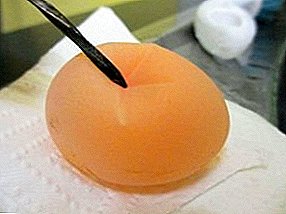
The disease is contagious, manifested due to parasitism of the trematode in the body of the bird.
Symptoms include the following factors: the bird is sluggish and motionless, bears eggs without a shell. Feathers ruffled. The cesspool is inflamed.
It is necessary to treat with carbon tetrachloride, and hexachloroethane can also be used.
Prevention requires proper poultry housing and cleaning.
Insect birds
There are such small insects in the world as feather-eaters that can harm your poultry.
They live on the skin of birds and feed on dead parts of the skin. Birds are infected by contact with each other.


